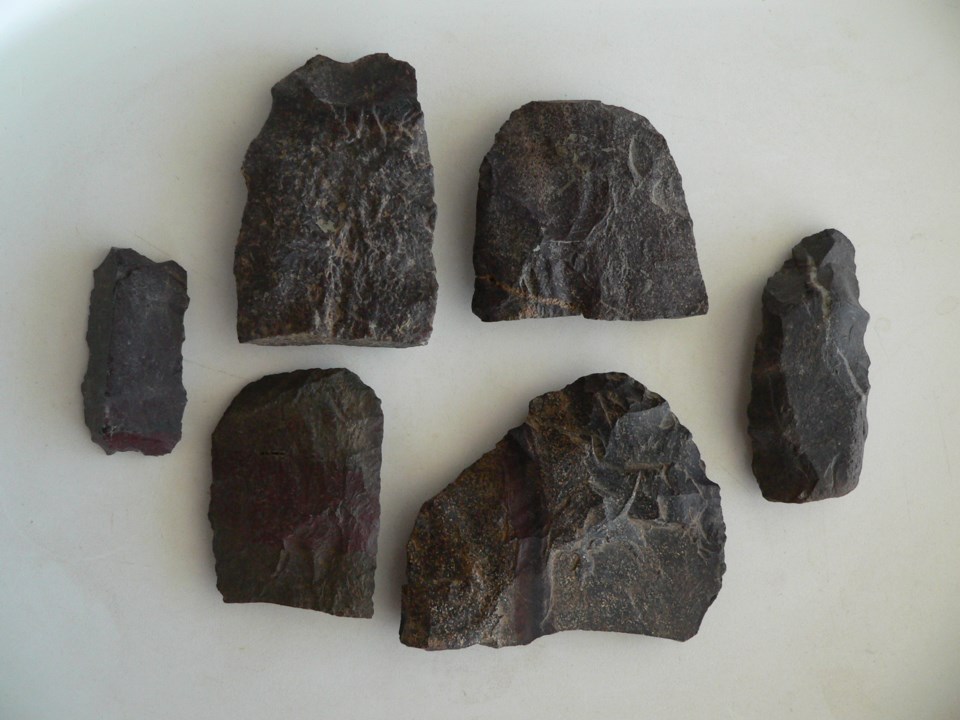Please "join us" for a casual gathering to celebrate the installation of the Cummins Site National Historic Site plaque in Hillcrest Park on Sunday, September 25, 2016 at 2:30 pm.
There will be a display of artifacts, and both Bill Ross (archaeologist) and Brian Phillips (geo-morphologist) will speak about the time of Lake Minong and the pre-contact site.
*****************************************************************
Background Information:
Cummins Pre-contact Site National Historic Site of Canada is located on the outskirts of Thunder Bay, Ontario, north of Lake Superior. Set on a treed landscape, the fenced-in site includes Cummins Pond and Minong beach ridge, which was once the shoreline of glacial Lake Minong. The site is part of a complex regional pattern of Paleo-Indian sites, collectively known as the Lakehead Complex, that is associated with taconic lithic assemblages, Gunflint formation outcrops, and proglacial lake strandlines. Tactonite debitage and stone tools lie scattered along the strandline and the surrounding area. Official recognition refers to the 7.3-hectare property owned by the Province of Ontario.
HERITAGE VALUE
Cummins Pre-contact Site was designated a national historic site of Canada in 1981 because:
- it is the most significant and representative littoral site of the Lakehead Complex.
Cummins Pre-contact Site, as part of the Lakehead Complex, is one of the most significant and representative examples of Plano cultural occupations, which existed during the late stages of the Paleo-Indian period (7000 B.C.E. – 3000 B.C.E). The Lakehead Complex developed according to the availability of raw lithic materials in the area, specifically from the Gunflint Formation that was rich in taconite, a flint-like pre-cambrian rock rich in iron and silica that was used by the Plano to make tools. Like most sites in the Lakehead Complex, Cummins Pre-Contact Site was developed because it was located near water supplies, it was along caribou migration routes and it provided access to fish, small game, and waterfowl. The site is at the core area of archaeological intensity, directly on the taconite, and served as a major quarry, workshop and habitation area in the Lakehead Complex. While surrounding portions of the site suffer ongoing disturbances as a result of gravel extraction, urban expansion, recreational vehicle traffic and road construction, the 7.3 hectares owned by the Province of Ontario remain intact.



